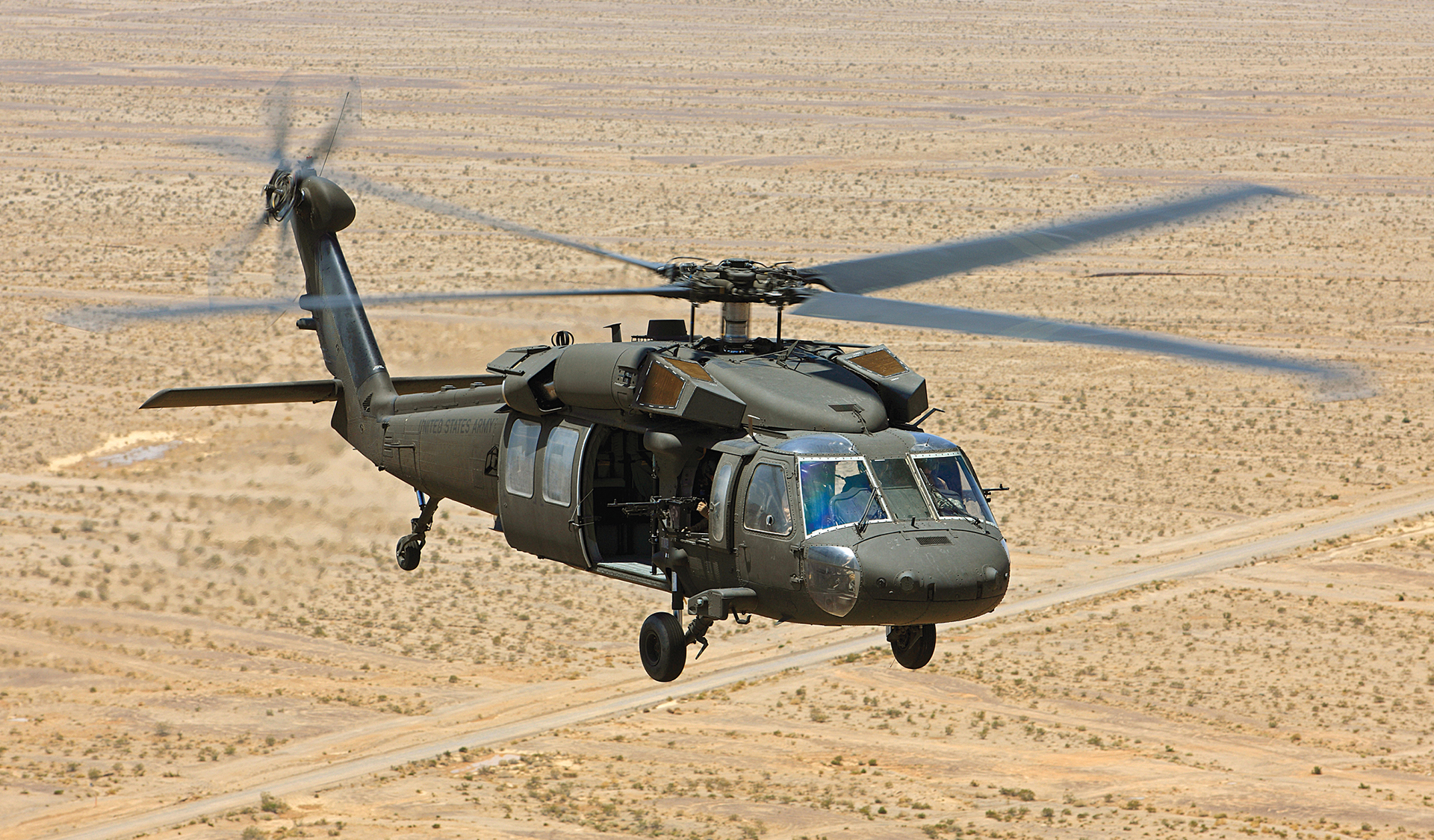Achieving Excellence: Trick Approaches for UH 60 Helicopter Upkeep
Achieving Excellence: Trick Approaches for UH 60 Helicopter Upkeep
Blog Article
Recognizing the Mechanics and Engineering Behind Uh 60 Helicopters
The UH-60 helicopter, generally called the Black Hawk, stands as a pinnacle of modern-day rotorcraft technology, embodying a mix of robust design and intricate auto mechanics. From its creation to its existing iterations, the development of this aircraft showcases a combination of advancement and usefulness. As we peel off back the layers of the UH-60's design, a globe of elaborate systems and precise engineering comes to light. Recognizing the auto mechanics and engineering behind this versatile aircraft reveals a realm where accuracy fulfills power, and where each component plays a vital duty in achieving flight.
Background of UH-60 Helicopters
The history of UH-60 helicopters traces back to the late 1970s when the United States Army sought a versatile and advanced utility helicopter to replace its aging fleet. In reaction to this need, the Sikorsky Airplane Company developed the UH-60 Black Hawk helicopter. Presented in 1979, the UH-60 promptly came to be a staple in armed forces operations due to its remarkable abilities.
The UH-60 was made to excel in a selection of objectives, including army transport, clinical evacuation, digital war, and special procedures. Its capability to adapt to various functions made it an important property to the united state Military and various other army forces worldwide
Over the years, the UH-60 system has undergone numerous upgrades and variants to boost its efficiency and keep speed with advancing objective requirements. These helicopters have actually seen substantial solution in disputes such as the Gulf War, Afghanistan, and Iraq, showcasing their dependability and convenience in diverse functional settings. The UH-60's abundant background is a testament to its long-lasting legacy as a premier energy helicopter.

Engine and Power Equipments
Making use of innovative propulsion innovation, UH-60 helicopters are furnished with sophisticated engine and power systems to guarantee optimal efficiency and integrity in a range of operational circumstances. The UH-60, generally understood as the Black Hawk, is powered by two General Electric T700-GE-701D engines, each capable of supplying up to 1,940 shaft horsepower. These turboshaft engines provide the essential drive for the helicopter to carry out its missions effectively, consisting of troop transportation, clinical evacuation, and fight support.

Rotor System and Aerodynamics
How do the blades system and aerodynamics of UH-60 helicopters contribute to their operational efficiency and trip capacities? The blades system of the UH-60 helicopter plays a vital function in offering lift and propulsion. The UH-60 features a four-bladed, completely verbalized rotor system that allows for high maneuverability and security throughout flight. This design enables the helicopter to perform a vast view publisher site array of objectives, from transportation and clinical discharge to deal with operations.
Aerodynamics also play a vital function in the performance of UH-60 helicopters. The streamlined fuselage and blades blade style reduce drag, permitting the helicopter to accomplish higher speeds and far better fuel efficiency. The wind resistant design of the UH-60 additionally adds to its capability to operate in varied environmental problems, including hot temperature levels and high altitudes.
Avionics and Trip Control Systems

In its intricate sychronisation with the blades system and the rules of aerodynamics of UH-60 helicopters, the avionics and flight control systems develop a critical network of innovations forming the aircraft's operational abilities. In the UH-60, these systems consist of electronic display screens, interaction radios, GPS navigation, weather radar, and autopilot systems.
The flight control systems of the UH-60 are accountable for converting the pilot's inputs right into the ideal adjustments to the rotor system, guaranteeing steady trip and ability to move. These systems include hydraulic actuators, servos, and computer systems that work together to control the tail and main rotors, in addition to various other trip control surface areas. By exactly taking care of the helicopter's trip characteristics, these systems make it possible for pilots to execute a large range of missions, from transport and search-and-rescue to battle operations, with accuracy and self-confidence.
Duty and Applications in Aeronautics
Avionics systems in UH-60 helicopters include a range of electronic systems that help in navigation, interaction, tracking, and regulating various airplane functions. These systems include electronic displays, autopilot systems, interaction radios, GPS navigating tools, and weather radar. In addition, these systems incorporate safety and security features such as auto-pilot modes, terrain recognition cautioning systems, and security enhancement systems to enhance the total safety and operational capacities of the UH-60 helicopters in numerous missions, consisting of troop transport, clinical evacuation, search and rescue, and airborne firefighting.
Verdict
Finally, the UH-60 helicopter is a functional airplane with an abundant history and progressed engineering. Its engine and power systems, rotor system, aerodynamics, avionics, and trip control systems all collaborate to make it a reliable and reliable device. The UH-60's duty and applications in aeronautics are substantial, varying from military operations to search and rescue missions. Its visit homepage continued development and use demonstrate its value in the field of air travel (uh 60).
In its detailed control with the blades system and the rules of aerodynamics of UH-60 helicopters, the avionics and trip control systems develop a vital network of innovations shaping the aircraft's functional capacities.The trip control systems try these out of the UH-60 are accountable for translating the pilot's inputs into the ideal changes to the rotor system, making sure steady flight and ability to move. Avionics systems in UH-60 helicopters include a variety of electronic systems that help in navigating, communication, monitoring, and controlling numerous aircraft features. In addition, these systems integrate safety features such as auto-pilot modes, surface recognition advising systems, and stability enhancement systems to improve the overall safety and functional capabilities of the UH-60 helicopters in numerous objectives, including army transport, clinical discharge, search and rescue, and airborne firefighting.
Its engine and power systems, rotor system, the rules of aerodynamics, avionics, and flight control systems all function with each other to make it a effective and dependable device.
Report this page